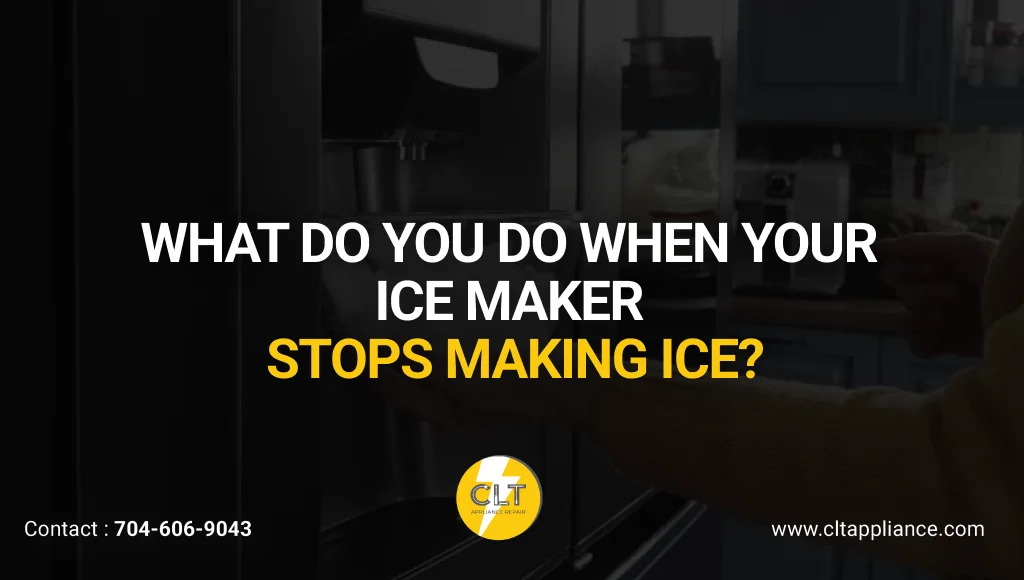In the world of beverages and food service, few appliances work as tirelessly as ice machines. These unsung heroes provide the essential frozen cubes that keep our drinks refreshingly cool. However, like any hardworking appliance, ice machines require regular maintenance to function efficiently. Proper cleaning not only extends the life of your ice maker machine but also ensures the ice remains clean, clear, and safe for consumption. Regular cleaning of an ice machine prevents mold, bacteria, and mineral buildup all of which can affect the taste, appearance, and safety of your ice.
If you’re a homeowner with a compact ice maker or managing a commercial establishment with a larger unit, understanding how to clean an ice machine is crucial.
Why Regular Cleaning is Essential
Over time, ice machines can accumulate mineral deposits from water, as well as mold and bacteria due to moisture. These contaminants not only affect the taste and clarity of the ice but can also pose health risks. Regular cleaning ensures your ice maker operates efficiently and produces high-quality ice.
How Often Should An Ice Machine Be Cleaned?
The frequency of cleaning depends on usage and water quality. For home ice makers, it’s advisable to clean them every six months. However, if your ice machine is used frequently or if you notice a change in ice quality, consider cleaning it more often. Commercial ice machines may require monthly cleanings due to higher usage.
How to Clean an Ice Machine at Home
Keeping your ice machine clean is essential for ensuring fresh, great-tasting ice and preventing bacterial growth. Over time, mineral deposits, mold, and residue can build up inside the machine, affecting ice quality. To maintain hygiene and efficiency, follow this step-by-step guide to properly clean your ice maker.
Step 1: Turn Off and Empty the Machine
Power Down the Ice Maker
Before you start, unplug the ice maker from the power outlet. If your ice machine is built into a refrigerator, turn off the ice-making function via the control panel. This step is crucial for safety, as working with an active machine can be hazardous.
Remove Any Remaining Ice
Once the machine is powered down, open the ice bin and discard any ice inside. If the ice is stuck together, let it melt slightly before breaking it apart. Some ice makers come with a drain plug. If yours does, use it to remove any standing water.
Quick Tip: Before moving on, wipe the interior with a dry cloth to absorb any excess moisture and prevent streaks or stains.
Step 2: Remove and Clean Detachable Components
Certain parts of your ice machine can be removed for a more thorough cleaning. These components may include:
- Ice tray: The area where ice cubes form.
- Ice scoop: Used for retrieving ice and prone to bacteria buildup.
- Water reservoir: The section that holds water before freezing.
- Filters (if applicable): Some ice machines have filters to improve water quality.
How to Clean the Components
- Soak in Warm, Soapy Water: Fill a sink or basin with warm water and add mild dish soap. Place the removable parts inside and let them soak for 10–15 minutes.
- Scrub Thoroughly: Use a soft sponge or brush to remove any grime, ensuring all surfaces are cleaned. Pay special attention to corners and crevices where dirt can accumulate.
- Rinse and Dry: Rinse each component thoroughly under clean water to remove soap residue. Allow all pieces to air dry completely before reassembling.
Pro Tip: If your ice maker has a water filter, check the manufacturer’s guidelines to see if it needs replacement after cleaning.
Step 3: Clean the Interior of the Ice Machine
Prepare a Cleaning Solution
To remove mineral deposits and bacteria, you’ll need an effective cleaning solution. You can use:
- A mixture of equal parts white vinegar and warm water (great for breaking down mineral buildup).
- A manufacturer-recommended ice machine cleaner (if you prefer a specialized solution).
Wipe Down the Interior Surfaces
Dip a soft cloth or sponge into the cleaning solution and thoroughly wipe down the interior walls, ice bin, and other surfaces. Be sure to reach the back corners, where buildup often accumulates. If there are stubborn spots, use a soft-bristled brush or an old toothbrush to scrub gently.
Rinse and Dry the Interior
After cleaning, use a separate damp cloth soaked in clean water to wipe away any remaining cleaning solution. Let the interior air dry before reassembling the machine.
Step 4: Reassemble and Run a Cleaning Cycle
Put Everything Back Together
Once all the parts are clean and dry, carefully reassemble your ice machine. Ensure that:
- The ice tray is securely in place.
- Any filters or reservoirs are properly positioned.
- The ice scoop is stored in a clean, dry area.
Run a Flushing Cycle
- Plug the machine back in and turn it on.
- Fill the reservoir with fresh water. If your model requires manual water filling, use filtered water to avoid future buildup.
- Run a complete ice-making cycle and discard the first batch of ice. This step flushes out any lingering cleaning solution and ensures the machine is ready for regular use.
Important: If the first batch of ice has an unusual odor or taste, run another cycle using only fresh water before resuming normal use.
How to Keep Your Ice Machine Clean for Longer
Regular maintenance can extend the life of your ice maker and keep ice fresh. Follow these simple tips to keep your machine in top shape:
Daily and Weekly Maintenance
- Wipe the exterior regularly with a damp cloth to remove dust and fingerprints.
- Empty the ice bin if ice has been sitting for too long, as stale ice can develop an unpleasant taste.
- Use filtered water to reduce mineral buildup and extend the time between deep cleanings.
Monthly and Seasonal Deep Cleaning
- Perform a full cleaning every 1–2 months, especially if you use the ice machine frequently.
- Check for mold or slime buildup, particularly in humid environments. If you notice discoloration, clean the machine immediately.
- Replace water filters as per the manufacturer’s instructions to maintain optimal performance.
Common Mistakes to Avoid When Cleaning an Ice Machine
Even with the best intentions, some common cleaning mistakes can affect your ice machine’s performance:
- Skipping regular cleanings: This leads to mold growth, mineral deposits, and unpleasant-tasting ice.
- Using harsh chemicals: Bleach and strong detergents can damage the machine and leave harmful residues. Stick to vinegar or manufacturer-approved cleaners.
- Neglecting to rinse properly: If any cleaning solution remains, it can affect the taste of the ice. Always rinse thoroughly with clean water.
- Forgetting to dry the machine: Moisture left inside can encourage bacterial growth. Always air dry before reassembling.
How to Clean an Ice Machine with Vinegar
Vinegar is an effective and natural cleaning agent for ice machines. Here’s how to use it:
- Mix Solution: Combine equal parts of distilled white vinegar and water.
- Apply to Surfaces: Use the solution to clean removable parts and interior surfaces, as detailed in the steps above.
- Rinse Well: Ensure all parts are thoroughly rinsed with clean water to remove any vinegar taste.
How Much Does it Cost to Clean an Ice Machine?
Cleaning an ice maker machine at home is cost-effective. The primary expenses include purchasing cleaning agents like vinegar or specialized ice machine cleaners, which typically range from $5 to $15. If you opt for professional cleaning services, the costs of cleaning and ice machines can vary based on the service provider and the machine’s size, ranging from $150 to $300.
Tips for Maintaining Your Ice Maker
- Regular Inspections: Periodically check for signs of mold, mildew, or mineral buildup.
- Use Filtered Water: This can reduce mineral deposits and improve ice quality.
- Replace Filters: If your ice machine has a water filter, replace it as recommended by the manufacturer.
- Keep It Dry: After cleaning out an ice machine, ensure all components are thoroughly dried before reassembly to prevent mold growth.
When To Get Professional Help
While regular cleaning can be managed at home, certain situations may require professional assistance:
- Persistent Odors or Tastes: If unpleasant odors or tastes persist despite cleaning, there may be underlying issues.
- Mechanical Issues: Unusual noises or malfunctions during operation.
- Complex Models: Some ice machines have intricate components that require specialized knowledge to clean properly.
Wrap Up
Regular cleaning of an ice machine is not just about maintenance, it’s about ensuring the safety, quality, and efficiency of your ice production. You can extend the life of your machine, save on costly repairs, and guarantee that every ice cube that comes out of your machine is as clean and safe as possible by following these steps.
Remember that understanding how to clean an ice maker machine and committing to a regular cleaning schedule are equally important. If you’re maintaining a small home unit or a commercial ice maker, the principles remain the same: regular attention prevents major problems.
At CLT Appliance Repair, we specialize in comprehensive ice maker repair and maintenance services. Our team of experienced technicians understands the importance of properly maintained ice machines for both residential and commercial clients. We offer complete cleaning services, preventive maintenance plans, and prompt repair solutions when problems arise. Serving the Charlotte area with pride, our ice maker repair Charlotte services ensure your machine runs at peak efficiency year-round.
Frequently Asked Questions (FAQs)
Q: How often should I clean my home ice maker?
A: Most manufacturers recommend cleaning home ice makers every 3-6 months, but this may vary based on usage and water quality. Check your machine’s manual for specific recommendations.
Q: Can I use bleach to clean my ice machine?
A: No, bleach is generally not recommended for ice machines as it can damage components and is difficult to rinse completely. Use only manufacturer-approved cleaners or food-safe alternatives like vinegar.
Q: Why is my ice cloudy even after cleaning?
A: Cloudy ice can be caused by air in the water supply, hard water minerals, or incomplete cleaning. Try a more thorough cleaning or consider installing a water filter if you have hard water.
Q: How do I know if my commercial ice machine needs professional cleaning?
A: Signs include reduced ice production, visible scale buildup, strange tastes or odors in the ice, or if it’s been more than 3 months since the last professional cleaning.
Q: Is it normal for my ice machine to make noise during the cleaning cycle?
A: Some noise is normal during automatic cleaning cycles as water pumps and components work to circulate the cleaning solution. However, grinding or extremely loud noises are not normal and may indicate a problem.
Author

- John Bennett
- John Bennett is a seasoned appliance repair specialist at CLT Appliance Repair, where he brings over a decade of technical expertise and a strong commitment to customer satisfaction. With a background in electrical and mechanical systems, John has built a reputation for reliable, efficient, and honest repair services across a wide range of household appliances-including refrigerators, washing machines, ovens, and more.







